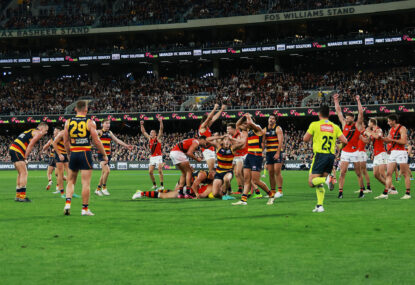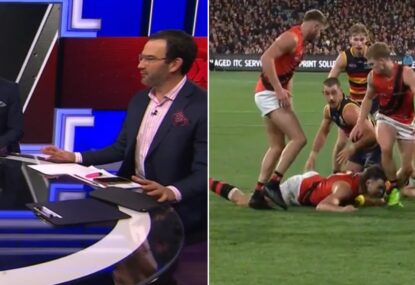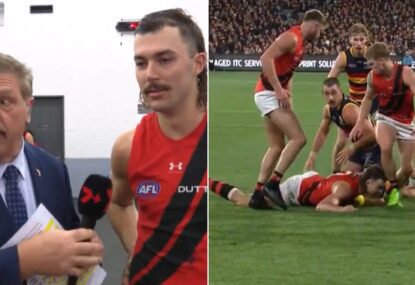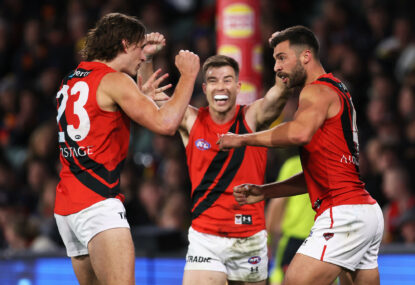With the home-and-away season, the finals series, and the trade period all completed, it’s time to do not only a review of each club’s 2018 season (complete with expectation comparisons), but the expectations for the coming 2019 campaign.
I’ll be looking at the meta-results for both team and players, as collected from ELO-Following Football’s wide range of sources.
First up, it’s the Adelaide Crows.
Back in 2017
The team finished as minor premiers with a home-and-away record of 15-6-1, with a percentage of 136.
The expectations for the 2018 team
Were top three again, at worst. The weighted analysis of over fifty forecast sources, great and small, averaged out to give them the most likely shot at the number one spot again in 2018.
Coming into the season, the players who were considered to be in the top 50 in the league by the AFLPA or The Roar.
Included Rory Sloane (top ten), Eddie Betts and Matt Crouch (top 30), Rory Laird, Bryce Gibbs, Tom Lynch, and Daniel Talia. That’s more top fifty players than any other team were thought to have.
In 2018, the team finished…
With more injuries than Evel Knievel! They ended in 12th place on the ladder (in a four-way tie) with a record of 12-10, and a percentage of 104.
It’s been…
Only two years since a minor premier failed to make top eight the following year – Fremantle, famously, from their glory-filled 2015 to 16th place in 2016.
It’s been six years since twelve teams finished with percentages over 100, and it only happened in 2012 because Jake Melksham kicked an otherwise meaningless behind in the last 90 seconds of a final-round loss to Collingwood, pushing Essendon’s season-long point tally to 2091-2090 and giving the 12th-placed Dons a percentage of 100.048.
It’s been 14 years since Adelaide last finished 12th on the ladder (in 2004). They won the minor premiership the next year.
It’s been 20 years since the Crows’ last title, the second of a back-to-back pair of finals upsets against St Kilda and North Melbourne, each of whom had placed first in those respective years.
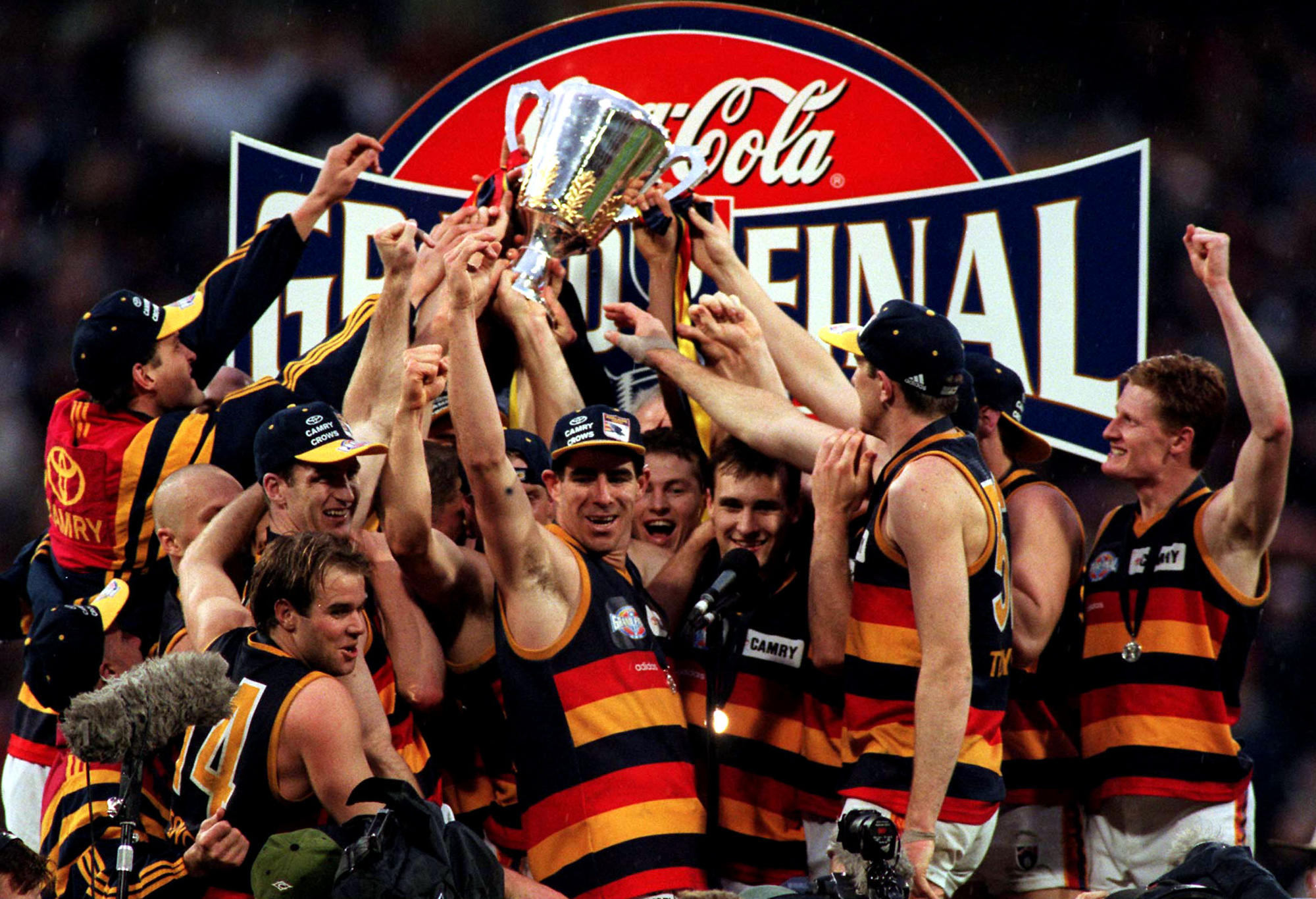
Adelaide were too good on the day in 97 and 98. (Photo: Allsport Australia)
According to my patented “ELO-Following Football” rating system, the team started the season in third place on the ELO-FF rating list, at 73.7. Richmond had the highest rating at the time, 77.8. 50 is average, while the lowest rating at the time was 17.6.
After Round 3, they had the best rating in the league, but by the bye (Round 13), they’d dropped all the way to 43.2, twelfth on that list as they were on the ladder.
With some players returning from injuries, they crawled back up to eighth and finished the season above average again, at 60.5 (above both the Hawks and Swans).
The other comparable rating systems said about the same thing. Wooden Finger, The ARC, and FMI all had the Crows near the top at the start of the season, dropping to 10th or so mid-year, before stabilising around the middle of the pack.
Across the spectrum game-by-game expectations
Final record: 12-10
Betting Line expectations: 16-5-1. The tipsters believed in them longer than they should have.
ELO-Following Football forecasts: 11-10-1. The beauty of a non-human rating system is that it avoids the sentiment that “this should be a really good team!”
AFL.com.au game predictions: 14-8.
The Roar predictions: 15-7 overall. Tallying up all voters, you get a record of 78-43.
“Pick-A-Winner” predictions: 14-8.
The Age forecasters: 12-10. The total from all twelve tipsters was 149-115.
BetEasy percentages: Even more pollyannaish than the professionals: 17-5, with a total of 152.2 per cent for, 67.8 per cent against.
My own game-by-game predictions pegged them at 14-8, so I don’t have room to crow.
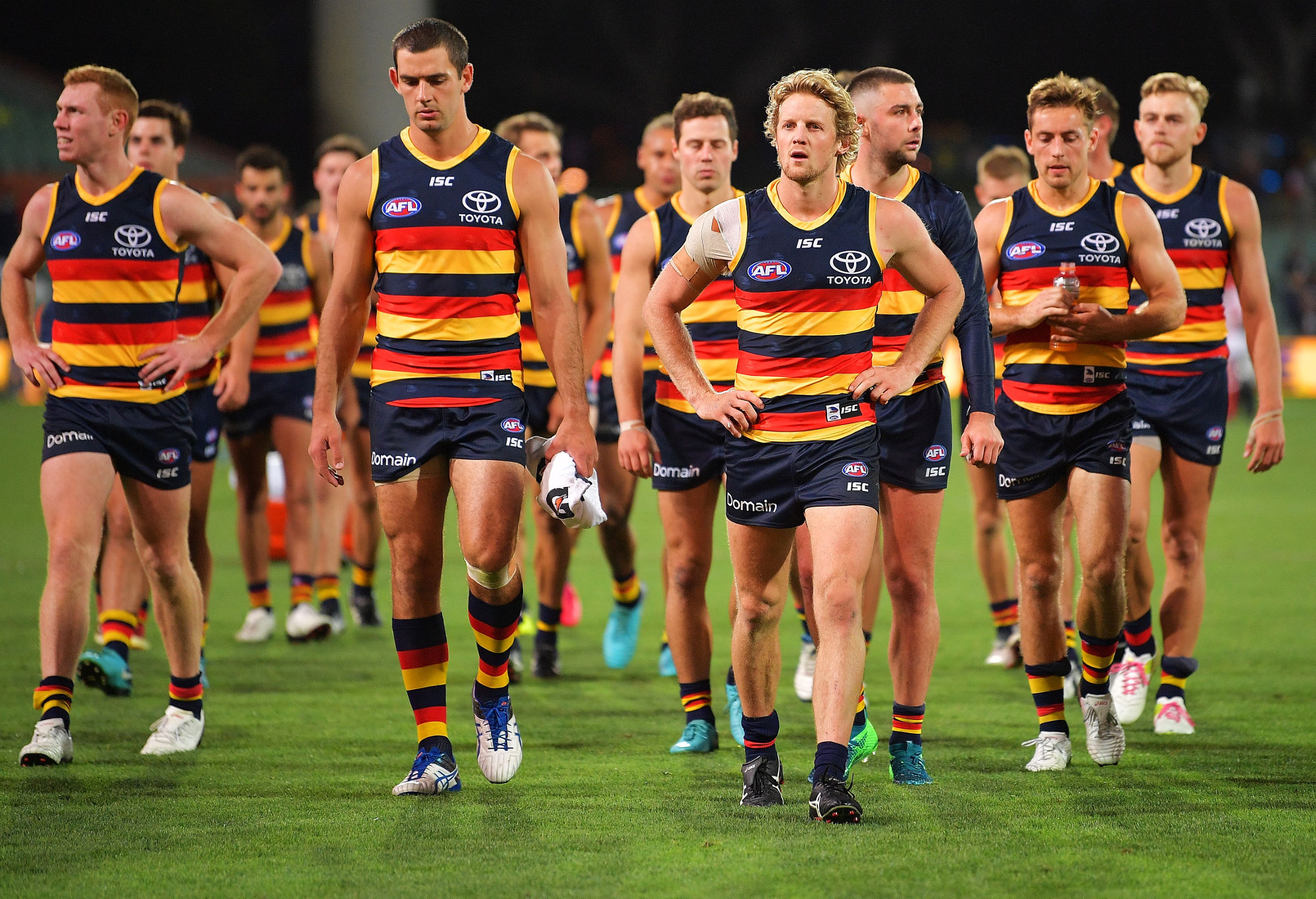
It was a disappointing year for the Crows. (Photo by Daniel Kalisz/Getty Images)
What was their best game of the season?
In Round 2, hosting their grand final conqueror Richmond, they dominated the Tigers 118-82. At that moment, the season was Adelaide’s for the taking.
Which game would they most like to erase from memory?
Up in Alice Springs in Round 10, the Crows were soundly routed by a surging Demons squad by the score of 146-55. It was the first of four straight losses leading up to the bye that cast them out of finals contention.
If I were to speak of the club in as many words as they had wins in 2018
“Without the Collective Mind camp, wouldn’t we just be blaming something else?”
Meta-Player of the year results
Over the course of the season, I gathered game-by-game naming of the outstanding players of the game or the week from fourteen different sources. These range from “Team of the Week” listings to more Brownlow-like top player of the game scenarios.
My tallies are from external sources, while the team’s “Best & Fairest” was selected by the team’s coaches, so they never quite match up. But it’s still an interesting comparison.
Regarding “Dominant”, “Prominent”, and “Notable” performances, those terms indicate games where 90, 80, or 70 per cent of those fourteen sources recognised the player as outstanding in that week’s game. This is the most “Brownlow-ish” I can get during the year.
1. Rory Laird – 329 points (12th overall)
Best & Fairest finish: first (his first B&F). Received 19 Brownlow votes, highest on the team.
Last year’s position: Second (16th overall)
Notable games: Four prominent games (R1, 2, 17, and 23) and one notable game (R18).
All-Australian back, Top 22 ELO-FF and First Team defence.
2. Bryce Gibbs – 174 points (66th)
Best & Fairest finish: fourth. Received nine Brownlow votes, second on the team.
Last year’s position: fourth for Carlton, (37th).
Notable games: Two prominent games (R3 and 11) and one notable game (R20).
3. Matt Crouch – 172 points (68th)
Best & Fairest finish: second. Received eight Brownlow votes, third on the team.
Last year’s position: 3rd (20th)
Notable games: One prominent game (R22) and one notable game (R20).
4. Josh Jenkins – 142 points (78th)
Best & Fairest finish: third
Last year’s position: 13th (158th)
Notable games: One dominant game (R23), one prominent game (R2), and one notable game (R20).
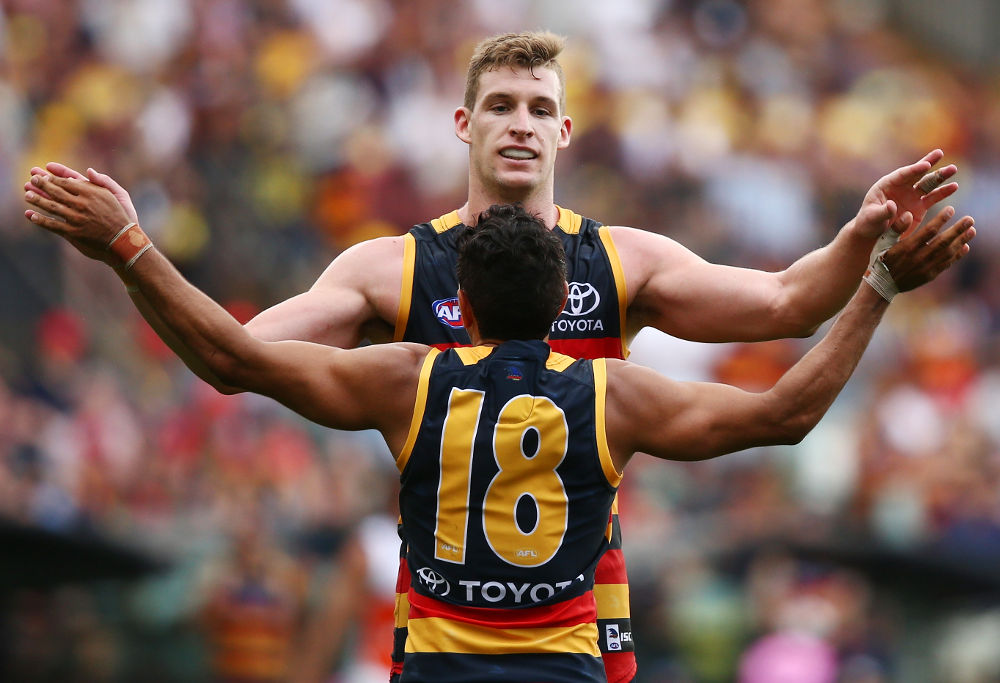
Josh Jenkins. (Photo by Morne de Klerk/Getty Images)
5. Paul Seedsman – 133 points (88th)
Best & Fairest finish: tenth
Last year’s position: 31st
Notable games: Two prominent games (R3 and 5).
6. Rory Sloane – 118 points (93rd)
Best & Fairest finish: out of the top ten, due to injuries. Received six Brownlow votes, fourth on the team.
Last year’s position: first (3rd)
Notable games: One dominant (R17) and one notable (R22).
7. Rory Atkins – 100 points (117th overall)
Best & Fairest finish: ninth
Last year’s position: tenth (104th).
Notable games: One notable game (R23).
8. Eddie Betts – 98 points (118th)
Best & Fairest finish: out of the top ten
Last year’s position: sixth (49th). In 2016 Betts was second on the team and 11th overall.
Notable games: None in 2018.
9. Hugh Greenwood – 94 points (123rd)
Best & Fairest finish: fifth.
Last year’s position: 17th.
Notable games: One dominant game (R18).
(equal) 10. Taylor Walker – 90 points (131st)
Best & Fairest finish: out of the top ten. Received five Brownlow votes, fifth on the team.
Last year’s position: fifth (45th)
Notable games: none in 2018.
(equal) 10. Wayne Milera – 90 points (131st)
Best & Fairest finish: eighth
Last year’s position: 23rd
Notable games: One prominent game (R6) and one notable game (R19).
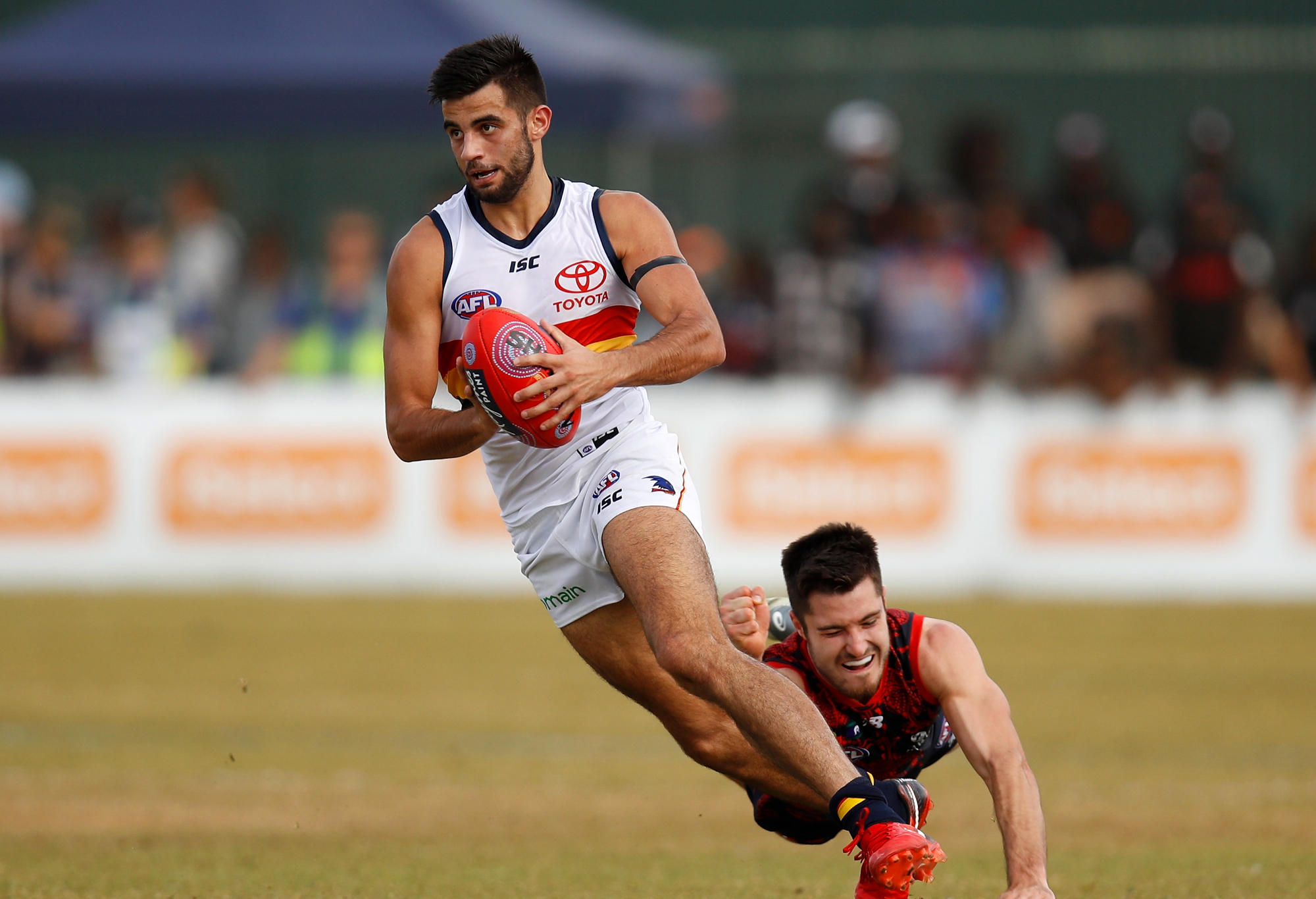
Wayne Milera has become an integral part of the Adelaide line-up. (Photo: Michael Wilson/Getty Images)
Adelaide had six top 100 players and 16 top 200 players in the 2018 ELO-FF meta-rankings.
Honourable Mentions
Luke Brown – 21st (26 points), seventh in Best & Fairest voting.
Tom Doedee – 12th (85 points), sixth in Best & Fairest voting.
Richard Douglas – 13th (83 points), one dominant game (R7).
Tom Lynch – 14th (78 points), one prominent game (R6) and one notable game (R17).
Brodie Smith – 19th (36 points), one prominent game (R21).
Player movement during the trade period
In: Shane McAdam, Tyson Stengle.
Gone: Mitch McGovern. A net loss, depending on the draft choices.
Current list of draft picks: 8, 13, 16 (three first rounders! Possibly to be packaged for a #3?), 21, 73, 83.
2019 list highlights
Backs: Luke Brown, Tom Doedee, Kyle Hartigan, Alex Keath, Jake Kelly, Rory Laird, Wayne Milera, Andy Otten, Brodie Smith, Daniel Talia.
Midfielders: Rory Atkins, Brad Crouch, Matt Crouch, Bryce Gibbs, David Mackay, Myles Poholke, Paul Seedsman, Rory Sloane.
Ruck: Sam Jacobs.
Forwards: Eddie Betts, Richard Douglas, Cam Ellis-Yolman, Darcy Fogerty, Jordan Gallucci, Hugh Greenwood, Josh Jenkins, Riley Knight, Tom Lynch, Taylor Walker.
Forecast for 2019
The Crows can’t have that many injuries again, right? They won’t be going off to any questionable retreats this year, right? When fundamentally solid clubs drop out of finals suddenly one year, they usually pop right back in the next.
Hawthorn (seven straight appearances, last year 12th, back to 4th this season), Richmond (three straight appearances, drop to 13th in ’16, back to the top the last two years), and Geelong (eight straight appearances, 10th place in 2015, then back to second the next two years) all demonstrate that.
Unless you think the Crows have Fremantle-type issues that will keep them down, it’s hard to see Adelaide missing finals again next year.
I see Adelaide in a pack from 6th to 9th next year, and my current forecast is that they return to finals in 8th place.

































































































